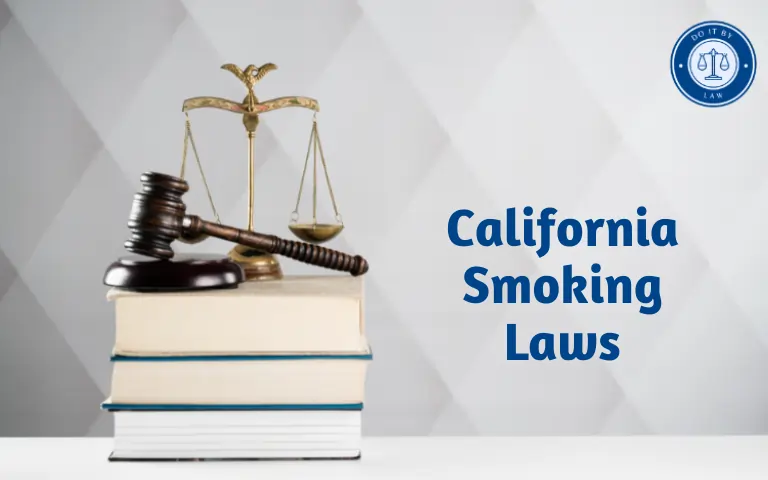California Smoking Laws: What You Need To Know
California has extensive regulations restricting tobacco smoking in workplaces, restaurants, bars, apartments, parks, beaches, cars with minors, and generally in public spaces. Rules expanded over the past 30 years to ban smoking indoors to limit health dangers from secondhand smoke. This article summarizes key aspects of California smoking laws.
Background on Enacting California Smoking Laws Regulations
California State enacted its first statewide smoking bans in the 1990s after public health research established clear links between secondhand smoke and illness. Initial 1994 regulations restricted smoking in most workplaces like offices and manufacturing facilities but allowed designated indoor smoking areas.
As evidence continued mounting on health consequences and public support grew, California passed broader legislation including:
- 1998 – AB13 fact sheet – Banned smoking in almost all enclosed workplaces like warehouses and theater lobbies.
- 2000 – AB839 fact sheet – Extended bans to cover bars, restaurant dining rooms, public buildings, and child daycare facilities.
- 2016 – SBX2-5 fact sheet – Eliminated exemptions allowing smoking in owner-operated bars, warehouse breakrooms, and hotel lobbies.
Who Must Comply With State Smoking Laws
All indoor business establishments and employers in California fall under statewide smoking prohibitions unless specifically exempted. Additionally, individuals smoking in prohibited public indoor and outdoor areas can be cited and fined.
Exemptions exist for:
- Private smokers lounge at tobacco shops
- Assisted living facilities meeting ventilation requirements
- Up to 50% of hotel rooms designated smoking
Key Provisions: Bans & Restrictions
California bans tobacco smoking, including using electronic cigarettes, in these areas:
- Indoor Workplaces & Businesses – Virtually all California businesses and nonprofit entities cannot permit indoor smoking with few exceptions. Break rooms, cafeterias, lobbies, offices, stores, theaters, warehouses, and manufacturing plants all have prohibitions.
- Restaurants & Bars – Smoking is banned in indoor and outdoor bar and restaurant dining areas. Designated employee break room smoking may be permissible in certain establishments meeting strict ventilation prerequisites – [CA Guidance Link]
- Hotels and Lodging – No smoking permitted in lobbies, hallways, elevators, etc. Up to 50% of guest room accommodations can be designated smoking rooms.
- Enclosed Public Spaces – Smoking is prohibited in all publicly accessible indoor areas like malls, retail stores, museums, concert halls, public transit facilities, schools, daycares, community centers, medical buildings, local & state government offices, and common areas of apartment buildings, condos and mobile home parks.
- Outdoor Recreation Locations – Smoking is banned within state or local parks with fines up to $250. Many beaches have local restrictions – common in San Diego, Los Angeles, and the Bay Area. College campuses, stadiums, theaters, and park facilities like zoos, playgrounds, and swimming pools often voluntarily create outdoor non-smoking sections or rules.
- Multi-Unit Residences – Within rental apartment buildings, condos and other attached housing structures smoking is prohibited in all common indoor areas like lobbies, stairwells, etc. Some cities expanded bans to certain outdoor common spaces. Within private units, landlords and property managers can prohibit smoking within leases, though state law doesn’t mandate this.
- Cars With Minors – Smoking any tobacco product, including e-cigarettes banned when persons under the age of 18 are present in a vehicle. Secondary smoke exposure fines start at $100 per violation.
Up to 25 feet From Certain Building Entryways and windows- Some city and county ordinances prohibit smoking within 25 feet of public buildings and businesses to limit smoke drift near ventilation intakes and entrances. Signage must mark no-smoking zones.
Penalties for Violating California Smoking Laws Regulations
Individuals and business owners violating indoor and outdoor smoking regulations face escalating fines, particularly upon repeat offenses. Workplace health and safety penalties may also apply putting certain licenses and permits at risk beyond direct smoking citation costs.
Fines for CA smoking violations:
- Indoors public spaces/businesses: $100-$500 per instance
- Within 25 feet entries/windows: $100-500 per instance
- Enclosed vehicles with minors: $100 per instance
- State parks: $250 per instance
Additionally, California mandates retailers to scan ID verification under 21 years old when selling tobacco. Failure to conduct age verification scans incurs fines of $400-$600 per incident.
California Smoking Laws Recent Changes & Proposed Modifications
As of 2022, legislation changed the legal tobacco and e-cigarette sales age to 21. Multiple jurisdictions passed enhanced smoke-free housing laws requiring landlords to disclose smoking policies and limitations on outdoor balconies, patios, etc. within a certain distance of buildings. State lawmakers continue introducing bills incrementally expanding prohibited areas such as playgrounds, camping sites, and curbside takeout zones.
The flavor ban prohibiting retail sales of flavored tobacco products like menthol cigarettes was meant to take effect in 2022 but enforcement paused pending a 2024 referendum to uphold or repeal. If retained, flavored cigarette sales would be illegal but flavored loose tobacco, cigars, and hookah products remain permitted for on-site specialty shop consumption.
California Smoking Laws Controversies & Debates
California frequently sees spirited debates balancing public health, small businesses, landlord rights, civil liberties arguments, and tax revenues whenever smoking restrictions are proposed.
For instance, health advocates support eliminating flavored tobacco exceptions to curb youth vaping. But groups like Black health associations argue banning menthol products promotes discrimination. Others want to see hotel and age verification policies revisited. Landlord groups also resist city proposals infringing rights governing private units and properties.
In general, controversies reflect difficulties navigating perceived tradeoffs between risks like increased smoking-related illness and death versus consequences from overregulation.
Conclusion & Main Takeaways
Over 30 years California legislatures incrementally enacted some of the most extensive statewide and local smoking bans to reduce exposure to secondhand smoke and restrict youth access to tobacco. All enclosed workplaces, restaurants, bars, and a majority of public spaces now prohibit smoking with rare exceptions to accommodate consenting adults like cigar lounges.
Multi-unit housing smoking policies remain complex to balance public health goals against personal liberties objections. Rules constantly see challenges and proposed expansions targeting issues like streetside dining, campsites, playgrounds, apartment distances, and flavored vaping as evidence builds on health impacts or new products emerge.
With high taxes and California’s influential stances often catalyzing national dialogue, tobacco usage restrictions will likely continue incrementally progressing amidst ongoing debates weighing rights, revenues, risks, and cultural attitudes towards smoking acceptance.






